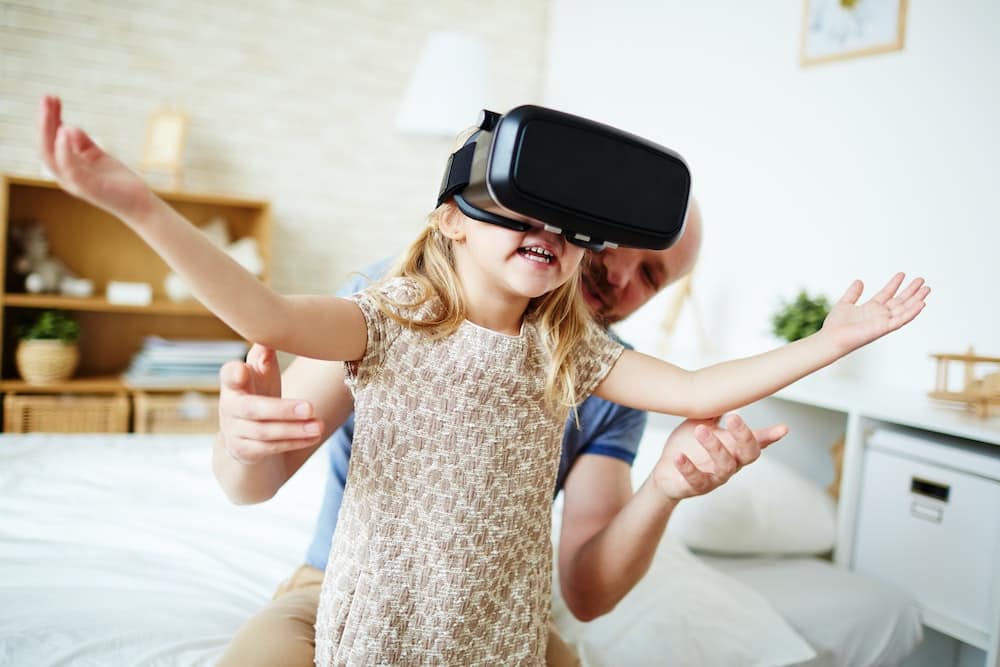Virtual Reality (VR) has taken the real estate industry by storm, transforming the way properties are marketed and sold. This digital revolution enables potential buyers to virtually tour properties from the comfort of their homes, providing a convenient and immersive viewing experience. In the UK, the adoption of VR in real estate showings has been increasingly gaining momentum. However, to fully leverage this technology, there are certain best practices that real estate agents should follow.
Leveraging VR for Interactive Property Tours
Virtual Reality technology offers a solution that is both interactive and immersive, allowing potential buyers to experience property tours in a whole new way. With VR, a buyer can tour a house, walk from room to room, and even look out of windows, all without leaving their current location. This section provides insights into how you can effectively utilize VR for interactive property tours.
Cela peut vous intéresser : How to Develop a Sustainable Urban Farming Business in UK Cities?
Use High-Quality 3D Models: The quality of the virtual tour experience is directly dependent on the quality of the 3D models used. Therefore, it is crucial to use high-quality 3D models to create a more realistic and immersive virtual tour. This can be achieved by leveraging high-resolution cameras and professional 3D modelling software.
Provide Interactive Elements: To enhance the virtual tour experience, include interactive elements in the VR environment. For example, you can allow users to interact with furniture, open doors, or switch lights on and off. This provides a more engaging experience and gives potential buyers a better feel for the property.
Avez-vous vu cela : What Are the Innovative Approaches to Digital Marketing for UK Speciality Foods?
The Importance of User Experience in Virtual Tours
Just like in any other digital platform, user experience plays a critical role in the success of virtual tours. A poor user experience can deter potential buyers, while a good one can encourage them to explore a property further. Here are some ways to ensure a positive user experience during virtual tours.
Simplicity is Key: The VR tour should be easy to navigate. Buyers should be able to move from one room to another without any difficulty. The interface and controls should be intuitive and straightforward, even for users who are not tech-savvy.
Provide Clear Instructions: Before starting the tour, provide clear instructions on how to use the VR headset and navigate the property. This will make the experience smoother and more enjoyable for the users.
Marketing and Promoting Virtual Property Tours
Successfully integrating virtual tours into your real estate showing strategy requires effective marketing and promotion. Here are some strategies to enhance the visibility of your virtual tours in the market.
Integrate with Your Website and Social Media: To reach a wider audience, embed the virtual tours on your website and share them on your social media platforms. This provides potential buyers with easy access to the tours and increases their chances of viewing your properties.
Use SEO Practices: Implement SEO techniques to make your virtual tours more visible on search engines. This includes using relevant keywords in your tour descriptions and adding meta tags and alt texts to your images and videos.
Training Agents to Use Virtual Reality Technology
Real estate agents are the bridge between buyers and the properties they are interested in. Hence, they need to be well versed in using VR technology.
Offer Comprehensive Training: Provide your agents with comprehensive training on how to use VR devices and platforms. This will help them guide potential buyers through the virtual tours and answer any questions they might have.
Keep Up with Technological Advances: The field of VR is constantly evolving with new advancements and improvements. Encourage your agents to stay updated with these changes to provide the best possible service to their clients.
Measuring the Success of Virtual Reality Integration
Once you have integrated VR into your real estate showings, it is important to measure its success to understand if it is helping you achieve your goals.
Monitor User Engagement: Keep track of how many users are taking virtual tours, how long they spend on these tours, and which parts of the property they are most interested in.
Collect Feedback: Solicit feedback from your clients to understand their experience with the virtual tours. This will help you identify any areas for improvement and enhance the overall user experience.
Remember, integrating virtual reality into your real estate business is more than just a trend. It’s a powerful tool that can give you a competitive edge in the property market. Therefore, it’s essential to adopt best practices to utilize it effectively and to its maximum potential.
Virtual Staging and Personalisation in Virtual Tours
Virtual staging and personalisation are powerful ways to engage potential buyers and enhance their viewing experience. This involves using VR technology to furnish and decorate properties in different styles to suit individual buyers’ tastes.
Utilise Virtual Staging: Virtual staging allows you to furnish and decorate a property digitally, improving its appeal to potential buyers. This approach has been proven to increase the perceived value of a property and speed up the decision-making process. Furthermore, virtual staging is cost-effective and can be adapted to match the tastes of different buyers.
Offer Personalisation: Using VR technology, you can provide a personalised viewing experience for potential buyers. This could involve changing the décor, layout, or even the architecture of the property based on the buyers’ preferences. This level of personalisation can make potential buyers feel more connected to the property, increasing their likelihood of making a purchase.
Remember, the goal is to make the virtual house feel as close to a real home as possible. Therefore, high-quality 3D models and realistic textures are fundamental in creating immersive and convincing virtual property tours.
Conclusion: The Future of Virtual Reality in the Real Estate Industry
The integration of Virtual Reality technology into the real estate industry is more than just a passing trend. It’s an innovative tool that is reshaping the way properties are marketed and viewed, offering unparalleled convenience and immersive experiences to potential buyers.
As we move forward, the continued adoption and advancement of VR technology promise to revolutionise the property market even further. We can expect more interactive and personalised house tours, which will allow potential buyers to explore properties in greater depth and detail.
However, to fully harness the potential of this technology, estate agents must commit to following best practices. This includes investing in high-quality 3D models, ensuring simple and intuitive navigation, offering comprehensive training to agents, and continually monitoring user engagement and feedback.
By doing so, estate agents can provide a more engaging, immersive, and convenient property viewing experience. This will not only help them stand out in the competitive real estate market but also enhance their property marketing efforts, ultimately driving more sales.
The integration of VR into the real estate industry is an exciting development that is set to change the landscape of property showings. And those who adapt to this change will certainly gain a significant edge in the competitive real estate market.











